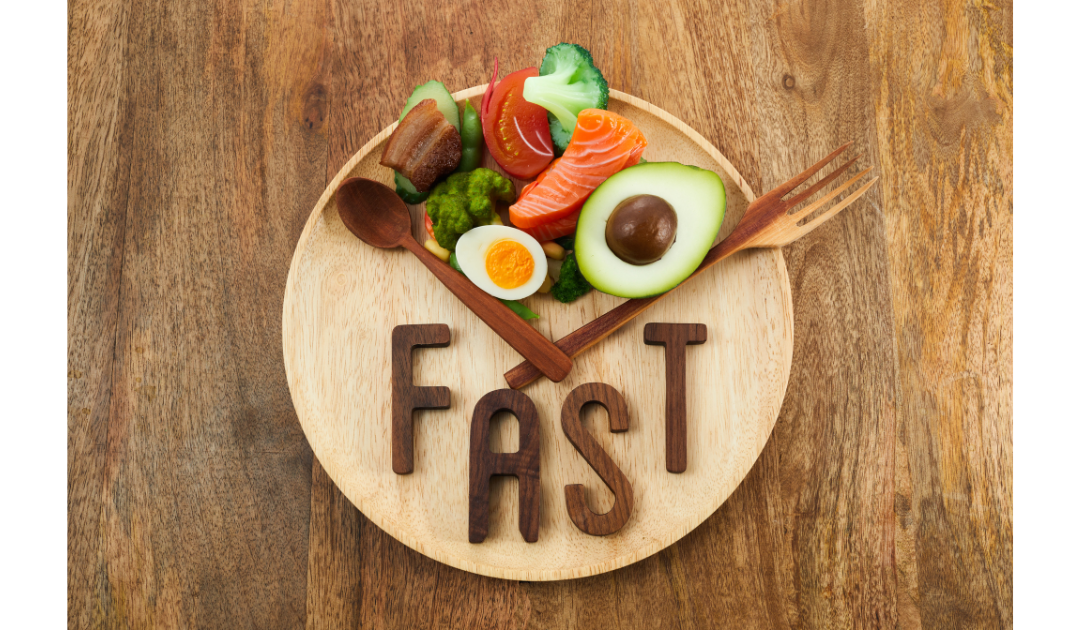Regular visitors to my site will know that I champion healthy eating as an essential part of working towards greater fitness and a healthy life. I encourage people to include foods with high nutritional value in their everyday diet; such as lean protein, oily fish, nuts, seeds, wholegrains, starchy carbs, along with lots of fruits and vegetables. Now let’s think beyond WHAT you eat and consider WHEN you eat and what impact the timing of your eating has on your body and performance.
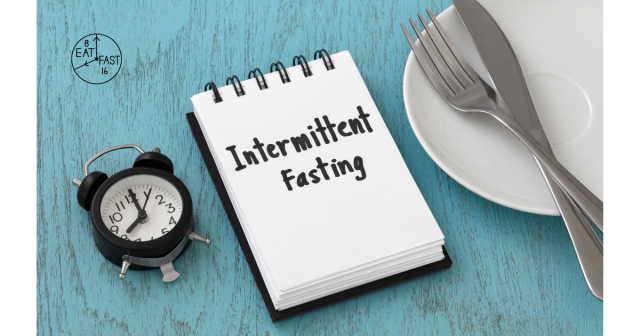
Overeating
For the majority of us in modern-day Britain we take for granted the choice to have three meals a day, often meeting friends for breakfast, lunch, dinner (not forgetting brunch), and the process of eating regularly is embedded in our psyche and social lives.
However, reflect on how we have evolved over the millenia and remember that early humans only ate food that was naturally available to hunt or harvest. Our age-old eating pattern would have included periods when food was scarce so that fasting was inevitable and our bodies had to adapt to being hungry to ensure we survived.
Unfortunately modern life brings excesses in food intake and this can overload the body and bring about health issues such as obesity, diabetes and high blood pressure. Perhaps this is why many people have reverted to periods of not eating with Intermittent Fasting (aka IF) as a preferred eating pattern and there is plenty of research to support the benefits and highlight the hazards of this.
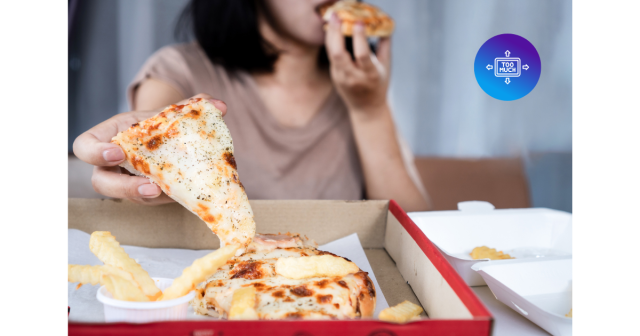
As a fitness coach advising athletes training for both health and performance goals it’s important to consider whether any sort of fasting is conducive to these goals, especially for athletes who push their bodies to the max and need a diet that provides energy and the nutrients to assist muscle repair. Let me just be very clear that I am not suggesting a severely restricted food intake and remember that, whatever your eating plan, your body needs regular hydration with around 8 glasses of water a day.
The IF plans I mention are tried and tested but if you are in any doubt about whether these are suitable for you, or if you have health concerns, then please seek medical advice before trying any of them. If fasting appeals to you, the plan you choose will depend on the activity you are involved with, your energy requirements and your lifestyle.
Most popular IF plans include:
5:2
Where you consume a ‘normal’ number of calories for five days and then, for two non-consecutive days, eat just 25% of your usual calorie total, around 500 calories for women and 600 for men. This is promoted in Dr. Michael Mosley’s book The Fast Diet and the restricted calorie days are likely to result in weight loss (1).
Choosing to spread out the fasting days, eg. Monday and Thursday, helps to prevent some of the side-effects, which include feeling faint, tired and anxious. Perhaps physical training on these days is best avoided? Those on this plan are encouraged to load up on nutrients, such as foods high in protein and fibre, like fish, meat and veg, on their ‘fast’ days to prevent hunger pangs (2). On a cautionary note, the plan encourages restriction on the ‘fasting’ days, which can trigger cravings and an unhealthy relationship with food. I also think it has a ‘one-size fits all’ structure that may be hard to sustain in the long term.
24 hour fast
I’d say this is a tougher plan to follow for an active person. You would need to choose a regular less active day of the week or month to sustain fasting for a full 24 hour period – remembering of course to keep up fluid intake during that time. You might finish eating dinner at 8pm one evening and then not eat again until 8pm the next day (3).
16:8
This involves eating normally within an 8 hour window and then fasting for 16 hours and I think would be the most compatible with an exercise regime. It has been suggested by David Zinczenko in his book The 8-Hour Diet (4). The advantage of this plan is that you can fit your 8 hour eating period around when you need to be most alert and energetic for physical training or for your working day. It will minimally disrupt your normal diet and is less restrictive and more flexible than other plans so would work with most lifestyles (5).
You can change the length of hours to suit your lifestyle. I personally opt for a 14:10 daily fast (14 hours fasting, 10 hours feeding window) as I exercise daily and need to eat soon after my training session. The other ranges are 12:12. 14:10 and the most popular, 16:8. Some people opt for a 18:6 but this is difficult if you’re active.
Sounds straightforward, but does it matter how you schedule your meals within the 8 hour window?
The answer is most definitely YES!
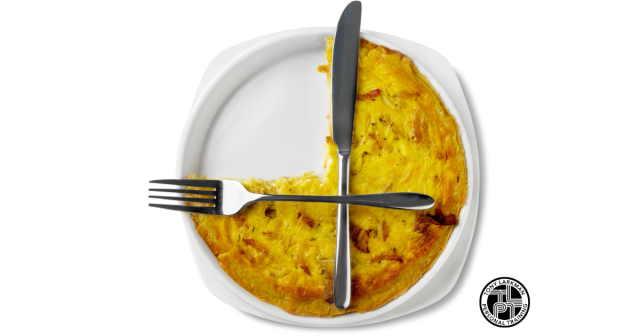
The popular route for 16:8 is to skip breakfast and eat only from midday-8pm, the fasting period made easier by the fact that you will probably be asleep for around 8 of the ‘hungry’ hours and a busy morning soon gets you to a well-deserved lunch. However, according to a 2019 study by the University of Murcia in Spain (6), skipping breakfast is linked to obesity and their research found that our bodies are primed to metabolise food most effectively in the morning. They advised the healthiest times to eat are breakfast at 7am, lunch at 12.30pm and dinner at 6.00pm – creating an eating window of 11 hours and a fasting period of 13 hours. To fit this theory into the 16:8 plan the eating times could be adjusted to breakfast at 9am, lunch at 1pm and dinner at 5pm.
Now we have to think about when best to eat the bulk of your daily calories: evidence shows that if you have a large midday lunch and a light dinner you are more likely to lose weight and have improved blood sugar, cholesterol levels and insulin sensitivity. As Jonathan Jun, associate professor of medicine at John Hopkins University says, “Eating late makes you less glucose tolerant and also makes your body burn less fat than if you had the same food earlier in the day.” (7) The message clearly echoes the old adage: ‘Breakfast like a King, Lunch like a Prince and Dine like a Pauper’.
If embarking on the 16:8 you will need to experiment to find the meal timings that work for you while maximising the benefits of loading the calories early on in the day.
How does your body react to fasting?
Fortunately ….
- After a few hours of fasting the body switches from using energy from food to burning its fat stores through a metabolic change known as gluconeogenesis, where glucose is generated to provide energy. This use of stored glucose and fat can lead to weight loss.
- Enjoying a healthy meal after fasting increases insulin sensitivity and can protect the body from diseases such as diabetes, high blood pressure and heart disease.
- During a fast your body destroys old or damaged cells in a process known as autophagy.
- It recycles the cells that help in the reduction of inflammation in the body and reduces diseases.
- It can improve the health of the skin and slow down the ageing process of the body.
- It can improve the immune system and disease-fighting capacity.
- Fasting can increase proteins in the brain, helping it to withstand stress and also increasing the production of new brain cells and nerve tissue that improve memory, mood, focus and promotes good sleep. (8)
Unfortunately …
- Fasting is initially very hard on your body as it will take time to adapt
- You may experience hunger, irritability, headaches and nausea
- Fatigue occurs as the body adapts to using energy from glucose
- Early weight loss may be due to loss of water, protein and other lean tissue rather than fat
- Limiting your intake may mean you increase the size of your meals to compensate for fasting
Avoid Intermittent Fasting if you:
- Have a condition requiring close monitoring of blood sugar levels
- Are either elderly or below 18 years old
- Take medication with food
- Have a BMI of less than 18.5
- Experience emotional issues around food, including eating disorders (9)
The effect of Intermittent Fasting on athletic performance:
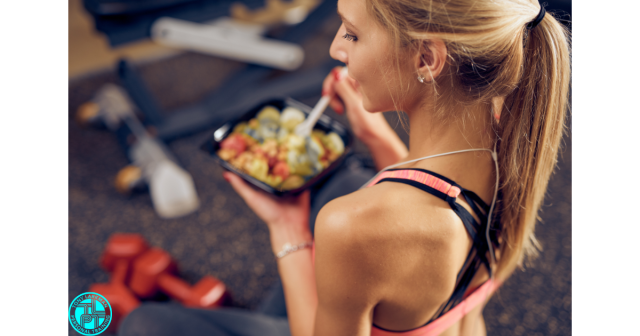
The theory is that by regularly stressing the body by depriving it of readily available carbs we force the use of fats for energy and maximise cellular efficiency. But, for all the long-term health advantages to be had from IF it would still appear that Training and Fasting are unlikely stablemates. I’m wondering how IF can fit with the demands we put on our bodies when we work out? Perhaps one way would be to schedule training so that easier/shorter sessions can be done during fasting and higher intensity/longer sessions when fuelled – always remembering to be fully hydrated at all times. I’m encouraged by recent research published in January 2024 by the Universities of Granada and Murcia in Spain which concludes that IF provides benefits in terms of body composition without reducing physical performance. It specifies that athletes who reduce their fat mass through IF will perform better in situations where power is used and they also related IF to an improvement in the immune system to prevent injuries and promote recovery. Although the research was positive towards IF it suggested that further studies are needed to be certain about its effects on sports performance. (10) (11)
Fasting for religious reasons:

In a different context fasting isn’t a choice but a religious necessity and there have been times when it has stood in the way of sporting achievement. As a Muslim, British rower Moe Sbihi faced a dilemma about whether to fast or not during Ramadan, which coincided with the 2012 London Olympic Games. Ramadan is the most sacred of times for Muslims, when nothing must be eaten during daylight hours as a form of private worship to bring nearness to God and time to empathise with those less fortunate (12). Moe knew that fasting would adversely affect his performance as he needed to take on board around 8,000 calories a day (13) to have the energy to compete. Also there is evidence to suggest that the disruption in his sleep/wake and rest/activity cycles during Ramadan would affect his performance by decreasing his VO2 max. He consulted with an imam about skipping the fast and was advised that for each of the 30 days of Ramadan he would need to do an entire month of fasting – meaning that he would not be eating between dawn and dusk for years. Fortunately a solution was found with Moe agreeing to pay for thousands of meals for the poor in the Moroccan hometown of his father. He’d followed the example of Moroccan goalkeeper Badou Zaki who played for Real Madrid during Ramadan. Moe was able to keep loading his calories and paid a high but necessary price for the Olympic bronze he won as part of the Men’s Eight at the London Games. (14)
I hope that this has given you all food for thought!
And please remember, if you plan to embark on an IF plan, do ensure that all your meals have high nutritional content rather than focus on high calorie content to fill you up!
- What is the 5:2 diet?
- Think about starting the 5:2 diet? Here’s what you need to know.
- What is an intermittent fasting diet?
- The 8 hour diet. Everything you need to know about intermittent fasting.
- What is 16:8 fasting. A beginners guide.
- Timing of Breakfast, Lunch, and Dinner. Effects on Obesity and Metabolic Risk.
- It’s not just what you eat, but the time of the day you eat it.
- What Happens to Your Body When You Fast for 16 Hours?
- What is an Intermittent fasting diet?
- Intermittent Fasting: Does If Affect Sports Performance? A Systematic Review.
- Intermittent Fasting For Athletes: What Does the Science Say?
- Ramadan. A Guide to Religious Observances.
- How Many Calories Do Olympic Athletes Need?
- Britain’s first Muslim Olympic rower solves Ramadan fasting dilemma during the Games by paying for meals for 1,800 people instead.

